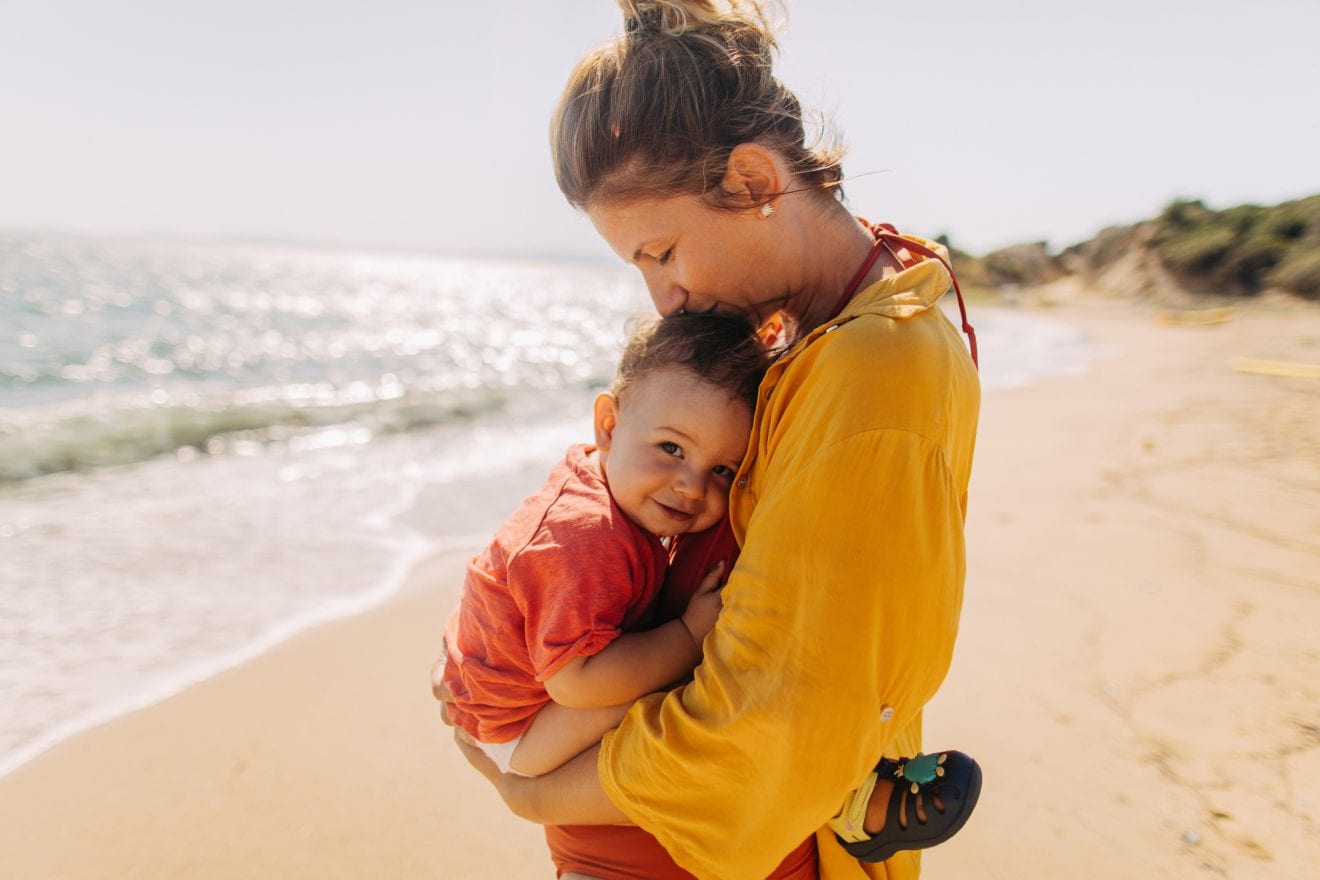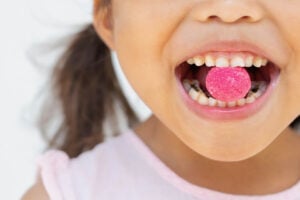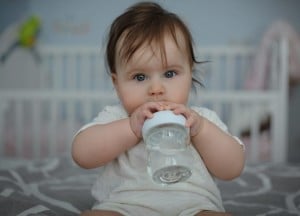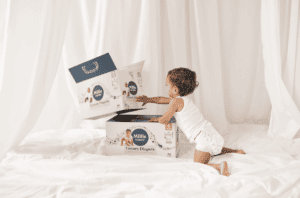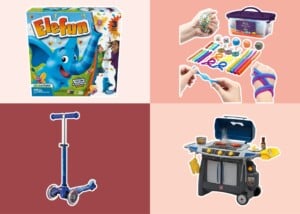Baby heat rash is a rash that typically presents as red skin with clear or white bumps. They are commonly found on your child’s face, neck, groin, under folds of skin, or along the body’s midsection, though they can appear anywhere. This generally benign rash is also called “miliaria” and “prickly heat,” as it results in an itchy or tingly feeling for your baby.
Baby heat rash itself is generally harmless and easily treatable. But in some cases, it can point to another, more severe issue, such as overheating or dehydration. Here are some tips for recognizing baby heat rash, what tends to cause it, and how to treat it.
Recognizing and Treating Baby Heat Rash
Doctors typically categorize heat rash into three types depending on the severity of the rash:
- Miliaria Ruba: The most common type of heat rash. It occurs when a blockage in the sweat glands happens near the surface of your baby’s skin, resulting in bumps, redness, and itching.1
- Miliaria Crystallina: The most benign form of heat rash. It happens due to a blockage in the sweat glands in the epidermis (top layer of skin). It presents as tiny clear or white blisters.2
- Miliaria Profunda: This type of heat rash is most severe but uncommon. It happens when sweat in the dermis (or the second layer of skin) leaks into the dermis. This can cause intense flushing and burning. Babies with miliaria profunda may also develop signs of heat exhaustion and skin infection.3
What Causes Baby Heat Rash?
Hot and humid conditions generally trigger the onset of a baby’s heat rash. This can mean a hot and humid climate, a fever, or an over-exposure to sunlight. It can also include an external heat source such as a floor heater and/or too many layers of clothing covering your baby’s skin. Under these conditions, your baby’s body temperature rises and their body tries to sweat, but their pores become blocked, trapping sweat instead of releasing it. This, in turn, leads to inflammation of the skin and your little one’s discomfort and itchy feeling.
Babies are more physically prone to heat rash for several reasons. First, they have smaller sweat glands and their pores are not fully developed and can get blocked more easily. They are also less able to regulate their body temperature than adults. Babies also have little control over their environment. They cannot remove extra clothing themselves and can’t move away from a heat source that may be bothering them. Babies also have more skin folds (neck, thighs, groin, etc.) that trap heat and sweat, leading to heat rash.
What Are Signs & Symptoms?
The signs of heat rash are typically noticeable, but rashes can be easier to see on lighter skin and harder to detect on darker pigmentation. For most babies, however, the most apparent symptom of a heat rash is the appearance of a red rash on parts of their body. Particularly areas where friction can occur, such as folds of the skin or body parts covered by clothes or exposed to a direct heat source. Your baby’s body might feel particularly warm in that area, so note if their skin temperature seems hotter there than in other parts of their body.
Visible symptoms can include a red rash, tiny blisters covering a large area of skin, warm skin, or your baby’s discomfort in the form of squirming, scratching, or crying. Depending on the type of heat rash your baby is suffering from, they may display different symptoms.
- Miliaria Rubra leads to scratching because it causes itching. It looks like tiny red bumps and blisters on red or inflamed skin.1
- Miliaria Crystallina produces tiny, pin-sized blisters that look like little beads of water or sweat trapped under the skin, and the blisters may not be red or inflamed.2
- Miliaria Profunda usually causes blisters that look like pimples and are located more deeply in the skin; these blisters are generally skin-colored. If a blister becomes infected, it can be a symptom of miliaria pustulosa, a condition that appears as irritated pustules that look like painful blisters. These may scab over or break open and bleed and may require medical attention.3
How Do I Treat It?
Remove Clothing: The first step to treating your baby’s heat rash is to remove clothing, blankets, or swaddle entirely. This starts the process of cooling them down. Check all areas to see where the heat rash has appeared on your baby’s body and allow cool, dry air to reach your baby’s skin. Don’t let baby get cold, though. If baby has cooled down, you can put loose, cotton clothing back on.
Bathe Baby: Next, bathe your baby in lukewarm water (don’t use cold water, as this could shock their system given the extreme difference between cold water and excess heat). Consider adding raw oatmeal or a gentle baby body wash containing colloidal oatmeal (see “Natural Remedies for Baby Heat Rash” for specific product recommendations.)
Lower Surrounding Temperature: If you have an air conditioner, turn that on to a comfortable temperature between 68-72 degrees Fahrenheit. Otherwise, you can take your baby outside if the air is cooler there. Another option is taking baby for a stroll inside a cooled down space such as a library, air-conditioned mall, or shopping center.
Natural Remedies for Baby Heat Rash
After cooling down your baby’s body temperature and ensuring that they are hydrated internally with milk, water, or formula, natural remedies can also be a great way to help soothe your baby’s skin. Plant-based products can provide relief for your little one’s inflamed and irritated skin and can be a great anecdote to your baby’s discomfort.
Aloe Vera
If you have an aloe vera plant at home, cut a branch off and rub the jelly onto the irritated skin. The jelly will dry quickly, and studies show that this plant reduces inflammation and can treat minor skin irritations.4 You can also buy aloe vera gel, but choose one with limited or zero preservatives and additives. Or try a live plant.
Oatmeal
Oatmeal is known for its soothing properties.6 Try adding half a cup into your baby’s lukewarm bath and gently pressing it against their skin once the oatmeal has soaked up water. Try adding raw oats to the baby’s bath. Or try an oatmeal bath wash.
Calendula Oil
Apply diluted baby-friendly calendula oil onto your child’s rash or put a few drops of the oil into a lukewarm bath and let baby soak in the water. This plant-based oil is derived from marigold flowers and has anti-inflammatory and astringent qualities to soothe baby heat rash.7
Lavender Oil
Lavender oil is known for relaxation and helping to soothe the body’s central nervous system.5 Apply a few dabs of pure lavender oil to the back of your baby’s neck for soothing aromatic therapy. This will help your baby settle down and encourage your baby’s body to relax, sleep, and renew itself.
Baking Soda
Add ¼ to ½ cup to your baby’s bath for a gentle cleanse of your baby’s skin. This will help prevent infection while the lukewarm bathwater cools down their skin.
Cucumbers
Use raw cucumber pulp to cool down the baby’s hot skin. Slice a cucumber and or spoon out the pulp and mash it up. Touch the inside of the cucumber to the baby’s skin for a cooling effect. You can also use a baby-safe after bath product that contains cucumber.
Coconut Oil
After bathing your baby in lukewarm water, pat dry and gently apply coconut oil on the affected areas of your baby’s skin. Coconut oil is known to soothe itchy skin, hydrate the skin naturally, and even has some antifungal and astringent properties.8,9
As always, call your doctor immediately if your baby:
- Develops a high fever or has chills.
- Shows signs of dehydration, such as slack skin and dark-colored urine
- She doesn’t seem as hungry or has difficulty feeding.
- Has a rash with pus in addition to redness, crusting, swelling, or tenderness.
- Has heat rash that sticks around even after you’ve treated it, or the rash seems to be worsening.


















